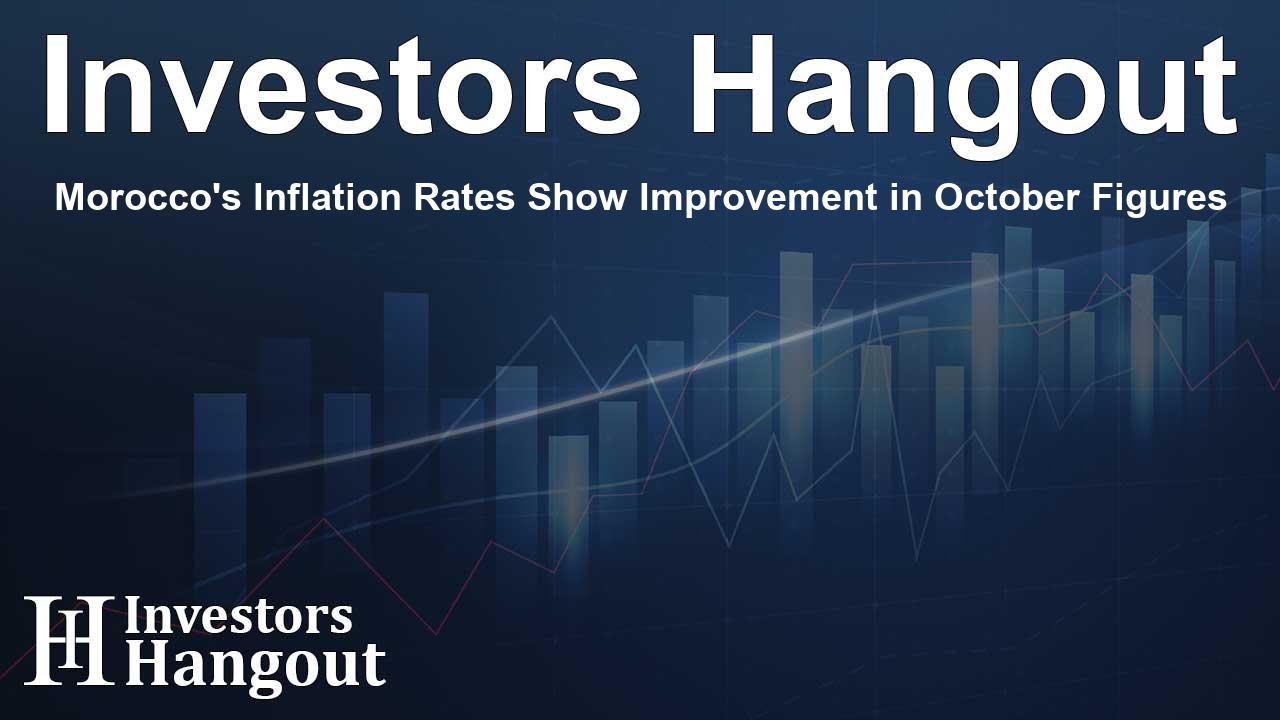Morocco's Inflation Rates Show Improvement in October Figures

Morocco's Inflation Shows Signs of Easing
Recent statistics from Morocco indicate a positive shift in the country’s annual inflation rate, which dropped to 0.7% in October. This is a decrease from 0.8% recorded in the previous month, showcasing a subtle yet significant change in the economic landscape.
Key Contributors to Inflation Changes
The primary factor influencing inflation rates remains food prices. In October, food prices exhibited a 0.5% increase compared to the same period last year. Interestingly, this modest rise suggests that consumer spending on food remains relatively stable despite various economic pressures.
Non-Food Inflation Trends
In addition to food prices, non-food components of the consumer price index also saw an uptick, rising by 0.7% year-on-year. This increase indicates that while food prices play a crucial role in the overall inflation rate, other goods are also contributing to slight upward pressures in the market.
Understanding Core Inflation Dynamics
Core inflation, which excludes more volatile items like food and energy, gives a clearer picture of underlying price trends. For October, core inflation experienced a month-on-month increase of 0.3% and a year-on-year rise of 2.4%. This data suggests that although general inflation is easing, the fundamental cost of living, excluding food, is still on an upward trajectory.
The Economic Implications
The recent trends in Morocco's inflation highlight the delicate balance policymakers must maintain. Lower inflation can enhance consumer confidence and spending. Conversely, persistent inflation, particularly in essential goods, could pose challenges for households as they navigate their budgets. The government's ongoing efforts to manage inflation effectively will play a crucial role in sustaining economic stability.
Conclusion
As Morocco's inflation rate continues to show signs of reduction, the upcoming months will be vital for gauging the sustainability of these trends. Observers will be keen to see how food prices and other economic factors interact moving forward, potentially influencing both consumer behavior and government policy.
Frequently Asked Questions
What is the current inflation rate in Morocco?
The current annual inflation rate in Morocco is at 0.7% as of October.
What factors are driving inflation in Morocco?
Food prices are the main contributor to inflation, with a noted increase of 0.5% from the previous year.
How does core inflation differ from general inflation?
Core inflation excludes volatile items such as food and energy to provide a clearer picture of long-term price trends.
What was the core inflation rate in October?
The core inflation rate in October showed a month-on-month increase of 0.3% and a year-on-year increase of 2.4%.
What does a decrease in the inflation rate signify?
A decrease in the inflation rate can enhance consumer confidence and spending, indicating potential economic stability.
About Investors Hangout
Investors Hangout is a leading online stock forum for financial discussion and learning, offering a wide range of free tools and resources. It draws in traders of all levels, who exchange market knowledge, investigate trading tactics, and keep an eye on industry developments in real time. Featuring financial articles, stock message boards, quotes, charts, company profiles, and live news updates. Through cooperative learning and a wealth of informational resources, it helps users from novices creating their first portfolios to experts honing their techniques. Join Investors Hangout today: https://investorshangout.com/
Disclaimer: The content of this article is solely for general informational purposes only; it does not represent legal, financial, or investment advice. Investors Hangout does not offer financial advice; the author is not a licensed financial advisor. Consult a qualified advisor before making any financial or investment decisions based on this article. The author's interpretation of publicly available data shapes the opinions presented here; as a result, they should not be taken as advice to purchase, sell, or hold any securities mentioned or any other investments. The author does not guarantee the accuracy, completeness, or timeliness of any material, providing it "as is." Information and market conditions may change; past performance is not indicative of future outcomes. If any of the material offered here is inaccurate, please contact us for corrections.